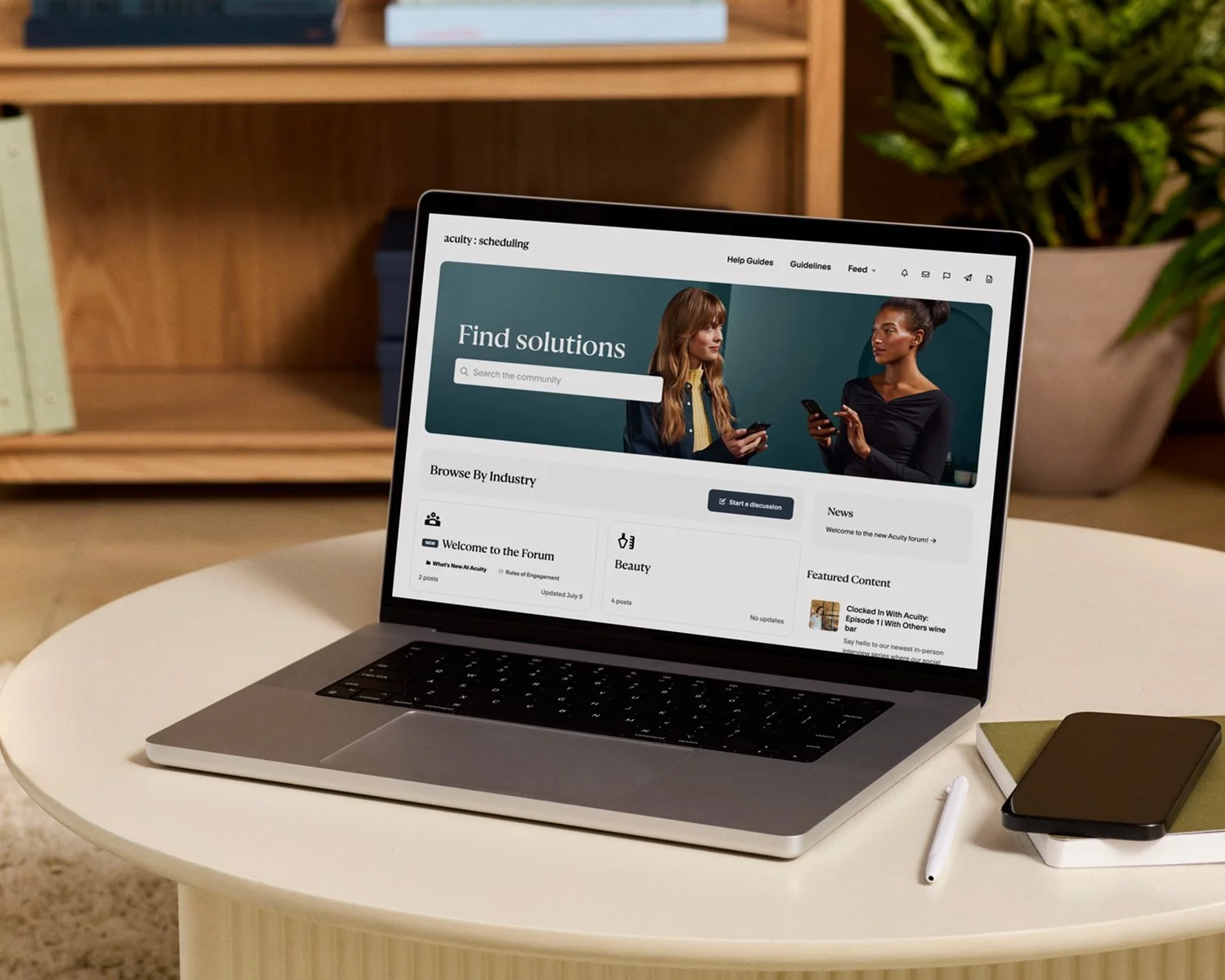Cómo lidiar con clientes difíciles: consejos para mantener la calma y la serenidad
Every appointment-based business will inevitably face a difficult client from time to time. Whether it’s a demanding client with high expectations or one who pushes boundaries, knowing how to handle these situations can make a big difference in maintaining your reputation and client relationships.
Here are practical, realistic strategies for dealing with difficult clients while keeping your cool, staying professional, and even learning from the experience.
1. Set expectations early
The best way to handle a difficult client situation? Prevent it from happening in the first place. From the moment a client books with you, set clear expectations about your services and what policies they need to follow. Whether it’s a cancellation policy, payment terms, or specific service limitations, lay it out in writing and ask clients to acknowledge it so there’s no confusion later.
With Acuity Scheduling, you can create an intake form to show clients your policy when they book. Ask them to agree to the policy by simply checking a box, ensuring everyone is on the same page from the start.
2. Listen actively and show empathy
When emotions run high, take a step back and listen. Let your client express their concerns without interruption, and validate their feelings with empathetic phrases like:
“I understand why this might be frustrating.”
“Thank you for bringing this to my attention. Let’s work on a solution together.”
“It sounds like you’re frustrated with [specific issue]. Let’s see how we can make this right.”
This approach can help de-escalate the situation and show that you’re committed to addressing the problem.
3. Identify the root cause
Sometimes, the initial complaint isn’t the full story. Ask clarifying questions to understand what’s really bothering the client. For example, if they’re unhappy with a service, ask: “What part of the experience didn’t meet your expectations?”
Pinpointing the exact problem helps you address it effectively and prevents miscommunication.
4. Respond promptly—but don’t rush it
Clients appreciate timely responses, especially when they’re upset. While it’s important to act quickly when dealing with difficult clients, don’t rush your reply. Take the time to gather all relevant information and craft a calm, professional response. If a resolution requires more time, let the client know and provide a clear timeline for follow-up.
5. Offer solutions with options
Once you’ve identified the problem, providing multiple solutions can empower clients and ease tension. For example, if a client is dissatisfied with a service, you might say: “I can offer a partial refund or a complimentary redo. Which would work better for you?”
By giving them choices, you show flexibility while maintaining control of the situation.
6. Document the situation and keep records
Keep detailed records of all communications with difficult clients, including emails, call summaries, and agreed-upon solutions. This documentation not only protects your business but also ensures clarity for both parties moving forward.
With Acuity Scheduling, you can use client notes to track key details and keep a record of past interactions—all in one place.
7. Know when to say goodbye
Despite your best efforts, some clients may not align with your business values or processes. It’s okay to part ways respectfully. For example: “We appreciate the opportunity to serve you, but we believe it’s best to discontinue our working relationship. We hope you find a provider that better meets your needs.”
This approach protects your team’s morale and ensures your focus remains on clients who value your services.
8. Reflect and learn from the experience
Every difficult client interaction is an opportunity to improve. After resolving an issue, take time to reflect with your team. Ask questions like:
What went well?
What could we have done differently?
Use these insights to refine your processes, policies, and communication strategies to reduce the likelihood of similar challenges in the future.
Tools to avoid tensions and build stronger client relationships
Handling difficult clients doesn’t have to be a headache. By setting clear expectations, responding with empathy, and using tools like Acuity Scheduling to streamline communication and policy enforcement, you can navigate challenging situations gracefully.
Ready to make client interactions smoother?
Start a free trial of Acuity Scheduling today and see how features like intake forms, automated appointment reminders, and client notes can help you build trust and maintain professionalism—even in tough moments.



